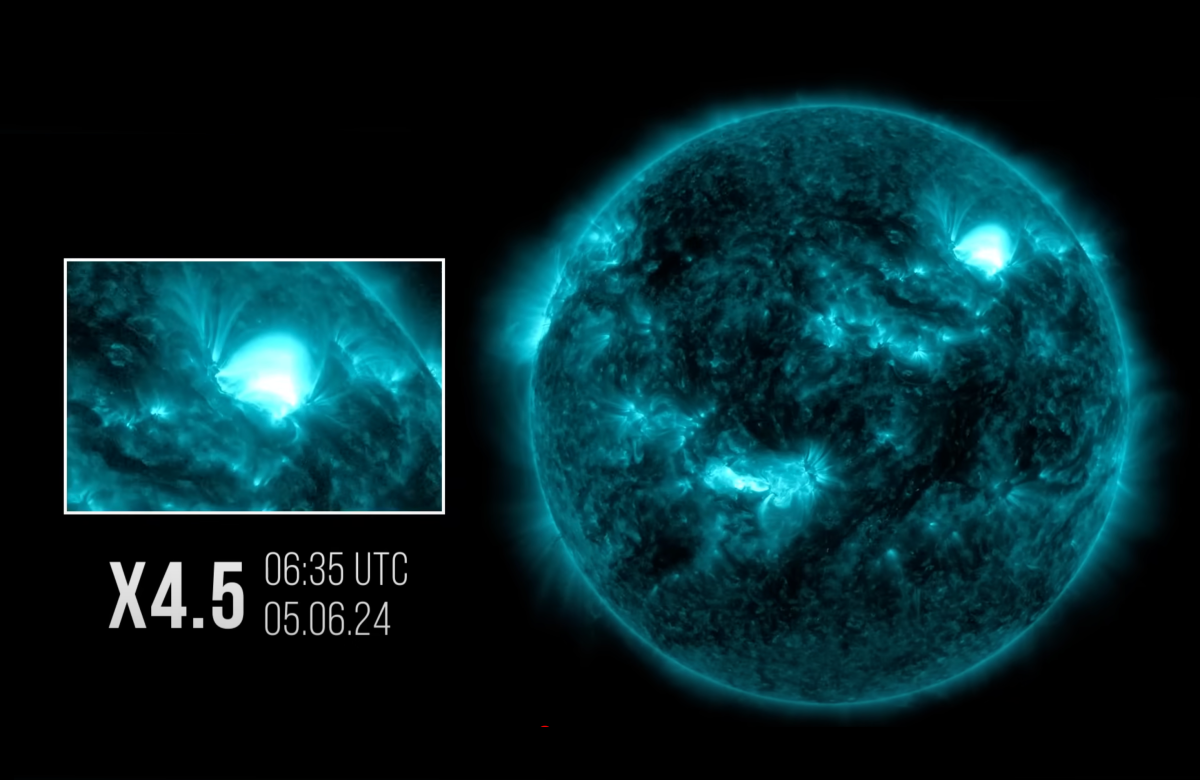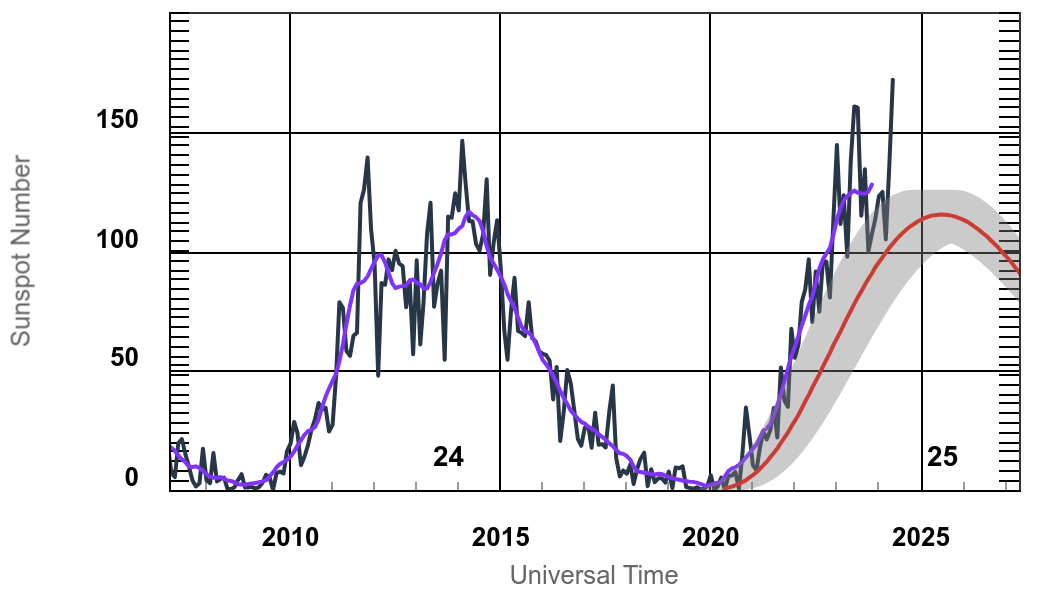
Explosions from Active Region 3664, one of the largest sunspot groups in recent history, triggered the May 10 solar superstorm and aurora sightings worldwide. | By Tim Lyster
In May 2024, skies above Earth erupted into a dazzling display of auroras, captivating observers around the world. The global spectacle was the result of a powerful geomagnetic storm triggered by a series of intense solar flares and coronal mass ejections (CMEs) from the Sun. As scientists and skywatchers marveled at the ethereal light show, researchers at NASA and other institutions were tracking the origins and impacts of this extraordinary event.
At the center of the solar activity was sunspot group AR3664, which emerged on the solar surface as a hotspot of magnetic energy. Over the course of a week, AR3664 unleashed an unprecedented ten X-class solar flares (see table), including a major X3.9-class flare on May 10. These eruptions marked AR3664 as one of the most active sunspot groups in recent memory, drawing the attention of astronomers, space agencies and AAVSO observers alike.
On May 29, Dr. Kristine M. Larsen, co-Leader of AAVSO’s Solar Observing Section, noted that “observers in the AAVSO Solar Section had been monitoring the growth of the mammoth sunspot region as the Sun’s rotation carried it across the disk of our star over two weeks. After spawning numerous flares and CMEs into space (only some of which were pointed in our direction), the active region was carried around the solar limb and has spent the last two weeks out of sight—– but not out of mind, as NASA’s Solar Dynamics Observatory (SDO) continued to keep an eye on it.”
Indeed, SDO played a crucial role in monitoring the evolution of AR3664 and capturing detailed images of the solar flares. Equipped with a suite of sophisticated instruments, including the Atmospheric Imaging Assembly (AIA) and the Helioseismic and Magnetic Imager (HMI), the SDO provided unprecedented insights into the dynamics of solar activity.
Global Light Shows
As the X3.9-class solar flare erupted from AR3664, it released a torrent of charged particles into space. The influx of solar energy interacted with Earth's magnetosphere, causing it to undergo rapid fluctuations. The result was a geomagnetic storm that reverberated across the planet, triggering auroral reports from observers far from the polar regions, including Puerto Rico, South America and South Africa.
While auroras captivated the public's imagination, scientists studied the underlying mechanisms driving the storm. By analyzing data from ground-based observatories, satellites, and space weather models, researchers sought to understand the dynamics of solar flares and CMEs and their potential impacts on Earth's technology and infrastructure.
A Dramatic Re-Entrance
AR3664—now renamed AR3697 after it merged with another active region—survived its trip around the solar surface. Its presence was heralded in late May by a X2.8 flare just prior to it cresting over the solar limb, followed by a flare rated at X1.4.
Through early June, AR3697 continued to fire off powerful solar flares.
The show wasn’t over. On June 8, as AR3697 approached the western limb of the Sun, it released a M9.7-class flare, which caused—as determined by NOAA’s Space Weather Prediction Center (SWPC)—the “strongest solar radiation or "S" storm since September 2017.” On June 10, as it moved around the solar limb out of sight, it fired two parting shots, one flare classified as X1.5.
The Sun’s heightened activity makes it an exciting object of interest for professional astronomers and citizen scientists alike. Readers are invited to join the Solar Observing Section to learn how observations collected by section members can add to our growing understanding of our nearest star.

Box: Solar Cycles & Solar Flares
Solar activity, measured by counting sunspots, ebbs and flows on an approximately 11-year period, known as the solar cycle. The latest iteration, Cycle 25, started in December 2019, and NOAA’s SWPC estimates the maximum will occur sometime between late 2024 and early 2026.
NASA's efforts to track and study the storm were part of a broader initiative to better understand the Sun-Earth connection and its implications for life on our planet. By leveraging cutting-edge technology and international collaboration, scientists are making strides in unraveling the mysteries of space weather and enhancing our ability to predict and mitigate its impacts.
Solar flares are classified by a letter that denotes their energy output, with each class further divided into 9 subdivisions. Each letter represents a ten-fold increase in energy output. In increasing intensity, flares are denoted B1 to B9, C1 to C9, M1 to M9, and finally Xn, where n is an integer. Because X-class flares are the most powerful, X-class flares don’t stop at X9. Indeed, the most powerful flare on record overloaded the sensors at X17, and was estimated to be about X45!

